|
Articles
24 May 2012 
NVIDIA GPU Technology Conference 2012Nikolay Snytnikov
GPU Technology Conference 2012, organized by NVIDIA, took place in San-Jose (California, USA) on May, 14-17. Actively studying and promoting GPGPU technology (general-purpose graphics processing unit), the company has become the trend-setter in the field of high-performance computing and visualization. Three out of five most powerful supercomputers in the world are based on NVIDIA Tesla professional GPU, and à considerable proportion of modern research in computational mathematics, physics, bio-informatics, and other branches of science are focused on developing and employing special algorithms for GPU and hybrid systems (CPU and GPU). Unsurprisingly, today GPU Technology Conference is one of the most popular and high-profile events that attracts the leading scholars and developers from all over the world.
NVIDIA invited Nikolay Snytnikov, an observer and expert of the isicad portal, to take part in GTC conference so Nikolay was able to write his daily reports on-the-spot.
Information about the company can be found on PLMPedia.ru, the latest achievements are presented in articles and press-releases on isicad.ru following the links below.
May 14, day 1
The main event of the day was an announcement of a possibility to use NSight debugging tool for Linux and Mac platforms (previously there was only a version for Windows). NSight is supplied as a plug-in for Eclipse development environment. Since many GPGPU calculations take place on Linux, the debugging facility can considerably simplify the life of application CUDA- programmers. More details to follow.
Some pictures to illustrate the first day of the conference.
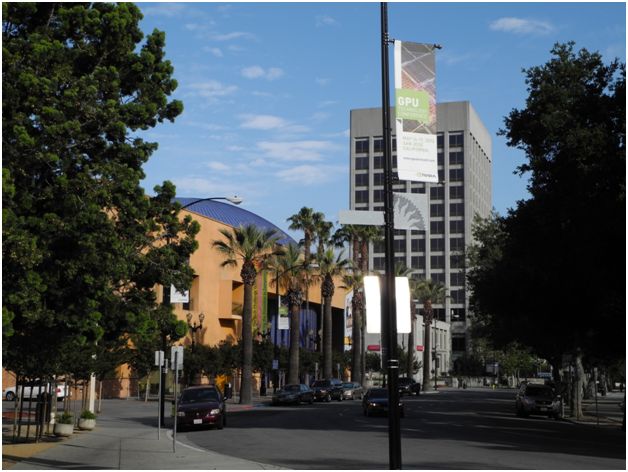
San-Jose, the largest town in Silicon Valley. Here every lamp-post seems to know about GPU, NVIDIA and the conference.
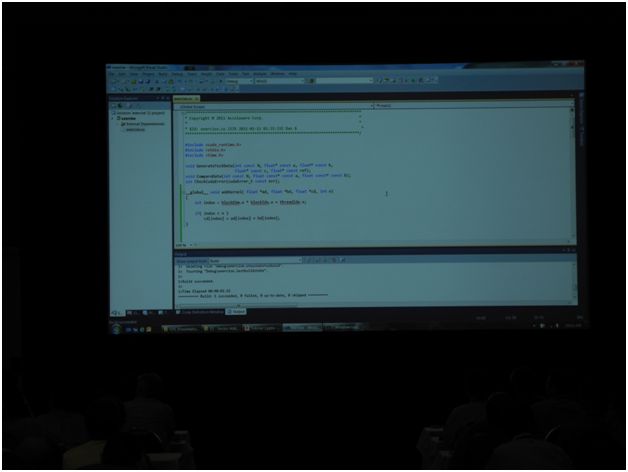
The beginning of the first day: training sessions, with immersion to the harsh daily routine of GPU developers. Journalists were warned in advance about complexity of presenting technical materials and, therefore, arrived there at their own risk. Some of them, however, were not scared of C language and the word _global_.

Review of NVIDIA programming platforms, debugging tools, and libraries. It is common knowledge that the audience can better digest material in a casual atmosphere and coffee is used as a catalyst of mental processes.

Evolution of the views regarding the algorithms and implementation of GPU Ray Tracing. What seemed impossible five years ago, became the mainstream in 2011 thanks to Adobe, Autodesk and Dassault Systemes; and looks like after 2012 it will become some sort of pops (in the finest sense of this word!).

Earlier tracing such scene required 10 hours of CPU work. Now it takes just 15 minutes.
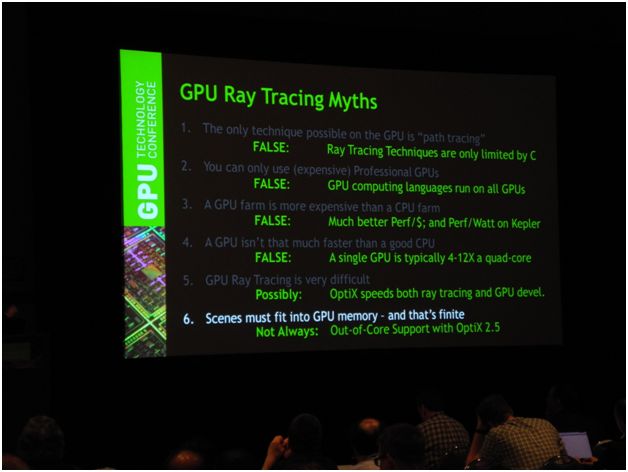
Discrediting urban myths about complexity of the methods for ray tracing on GPU. NVIDIA OptiX will help resolve the most problematic issues: limitations of GPU memory and labor intensity of software implementation.
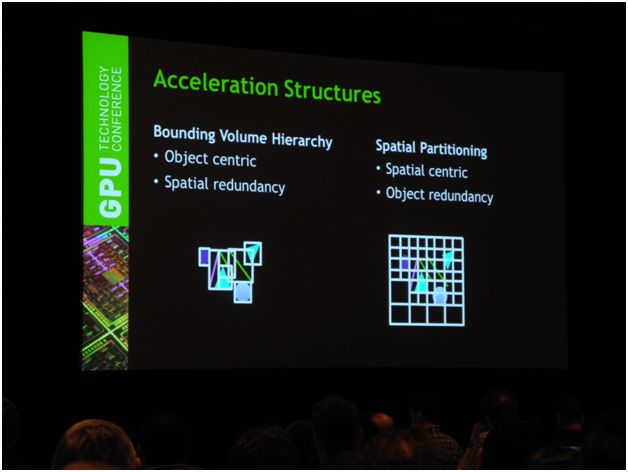
An example of a sub-task that requires significant resources – building hierarchies from Axis-Aligned Bounding Box or Bounding Volume. NVIDIA OptiX library will independently complete this extremely hard work, freeing the time of an application programmer.
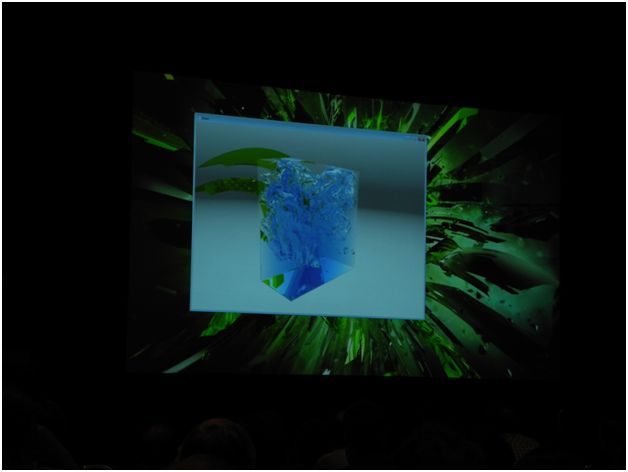
Ray Tracing can already be interactive for some tasks: simulating and displaying water movements in a cube takes place in the real-time mode.
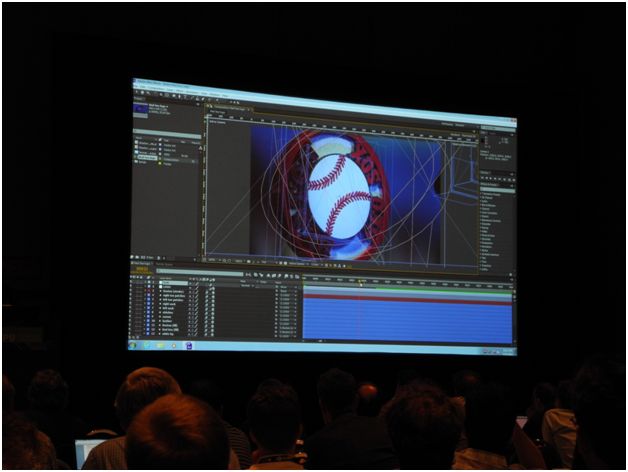
Similar models from Adobe After Effects CS6, using OptiX, are calculated almost interactively (within dozens of seconds).
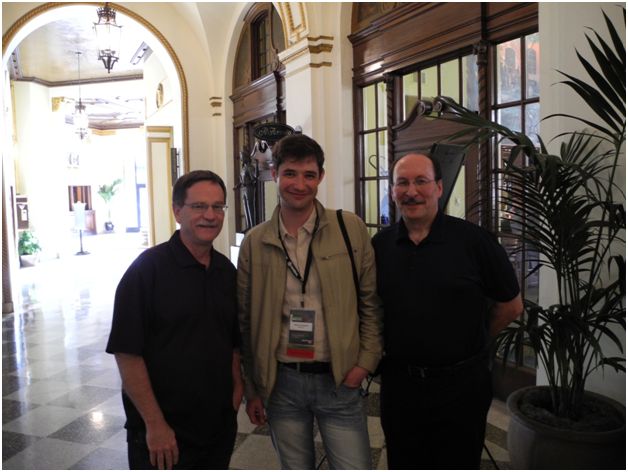
A surprise meeting of CAD analysts: Randall Newton (Graphic Speak, gfxspeak.com), Nikolay Snytnikov (isicad.ru), Brad Holtz (Cyon Research, COFES). Even at the GPU conference one can find a chance to discuss the future of software engineering, geometric modeling and 3D kernels.
May 15, the second day
This day practically became a sensation at the GTC conference. Apart from an expected announcement of releasing Tesla Kepler architecture (after a recent launching GTX 680 and 690 GPUs to the market, this seemed to be simply a matter of paperwork), Jen-Hsun Huang, NVIDIA co-founder and CEO, made several announcements about cloud calculations technologies. The video of his speech can be found here, while press-releases regarding each technology are available through the following links:
Below please see some illustrative pictures and comments.

Awaiting Jen-Hsun Huang: the auditorium is completely full. The seats on the front rows are reserved for journalists. Powered music boosts energy.
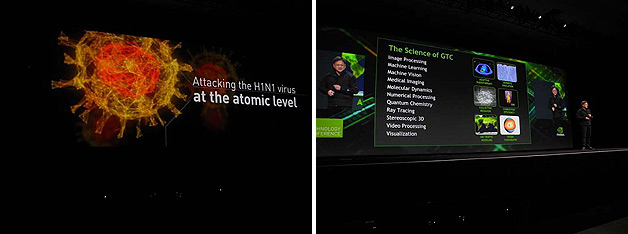
Warming up the audience, Jen-Hsun reminded of the current success of NVIDIA technologies. He gave an impressive list of scientific achievements based on calculations on GPU (right), and several more specific tasks, consistently associated with something very complex and important, for instance, much talked-of H1N1 virus (left). The company achieved everything within five years, effectively creating a new market segment.
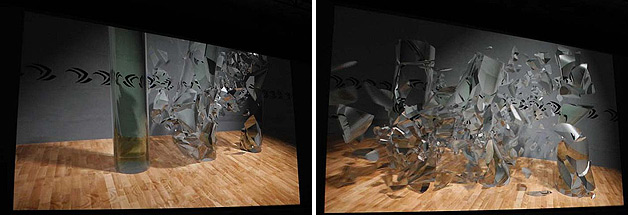
To make sure that the audience absolutely appreciates the possibilities that are opening up, he shows a demo-application: a bullet flows in three standing glass cylinders. Ray tracing processing and collision detection take place in the real-time mode.
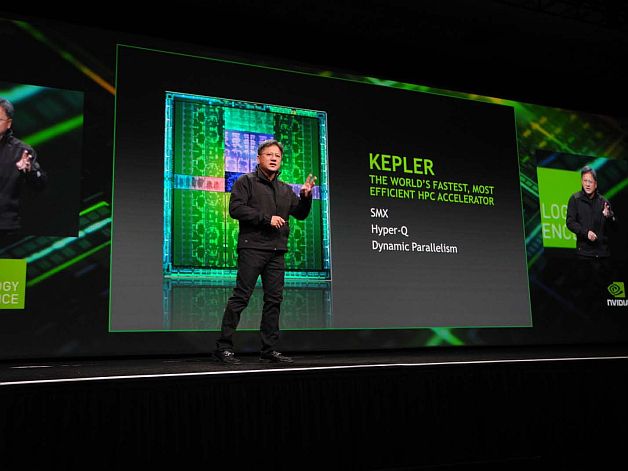
What is Kepler architecture? Its three main specific features include: 1) SMX streaming multiprocessor with a considerable number of cores in comparison with SM predecessor for Fermi architecture, 2) Hyper-Q technology that ensures simultaneous access to GPU through several processes, 3) Dynamic parallelism: ability to create new threads from the already created threads without returning control to CPU.
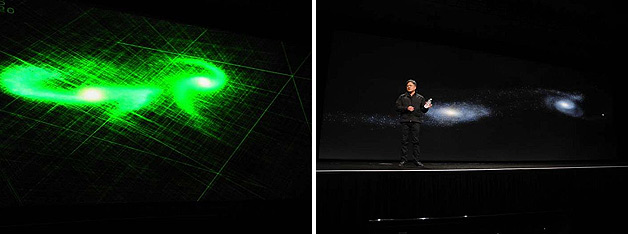
What can be more spectacular than to take a truly die-hard task and demonstrate all three specific features? The picture shows modeling of the dynamics of colliding galaxies. Experts on computational astrophysics easily recognize here a renowned in privy tree-code of Barnes & Hut, enabling to move from squared complexity of pairwise calculation of gravitational forces between particles to O(N logN). The fact of implementing this algorithm on GPU is illustrative indeed.
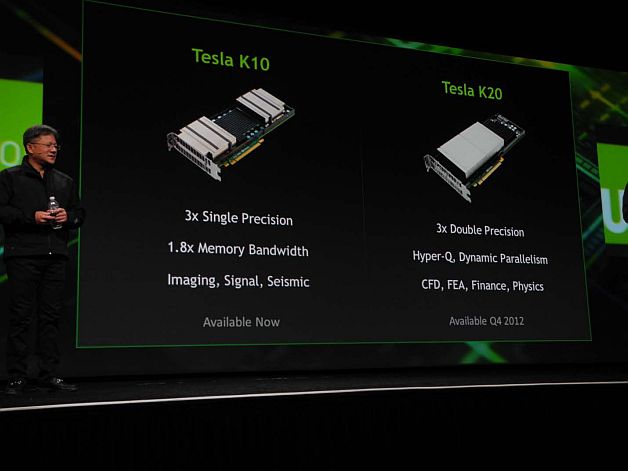
Tesla K10, that provides threefold efficiency increase, is already available. Tesla K20, which will be interesting for computational mathematicians – will only be available in Q4. As it turned out, the galaxies collision was modeled on yet unavailable Tesla K20.
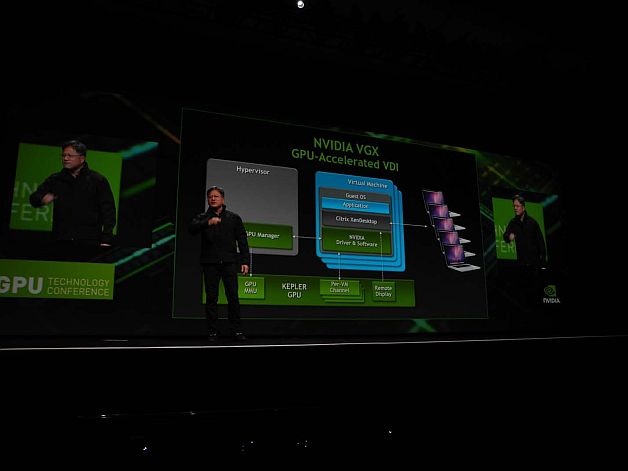
Finally the hour of cloud technologies has come: NVIDIA VGX – is a new platform for professional cloud services.
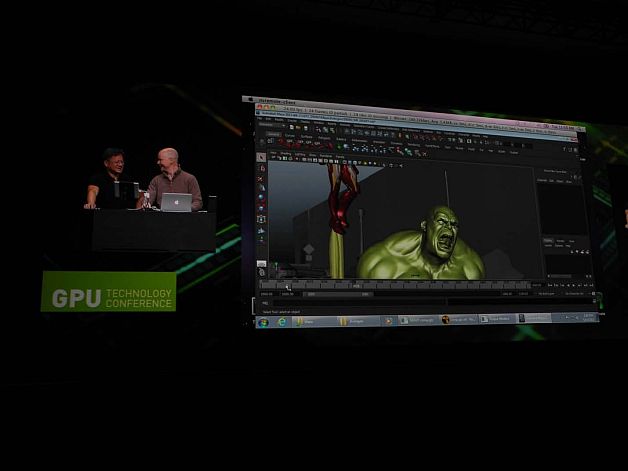
A Monster from Autodesk Maya emerged from a cloud launched under control of OS Windows. The client operates under Mac.
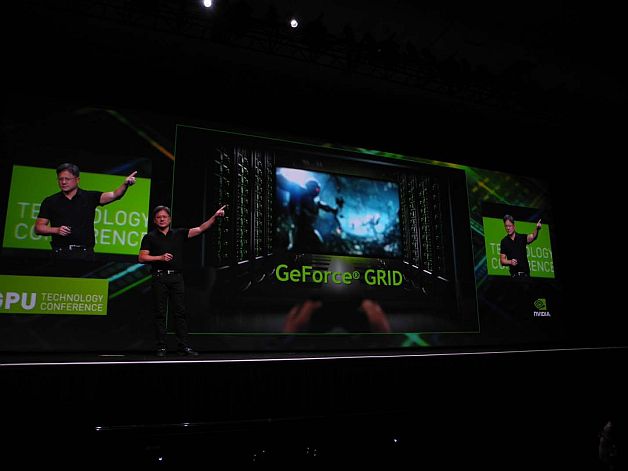
Gamers also can be happy: GeForce Grid technology is released for them.
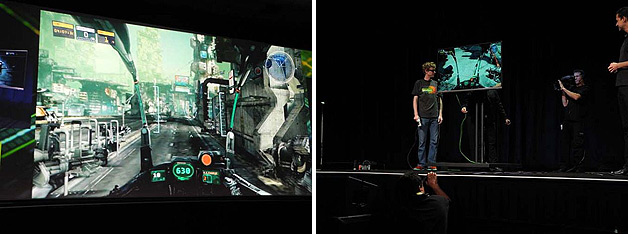
Jen-Hsun explains: all necessary game equipment consists of a monitor and a cable. By the way, it’s not a coincidence that the cable is green, as all technology is also green.
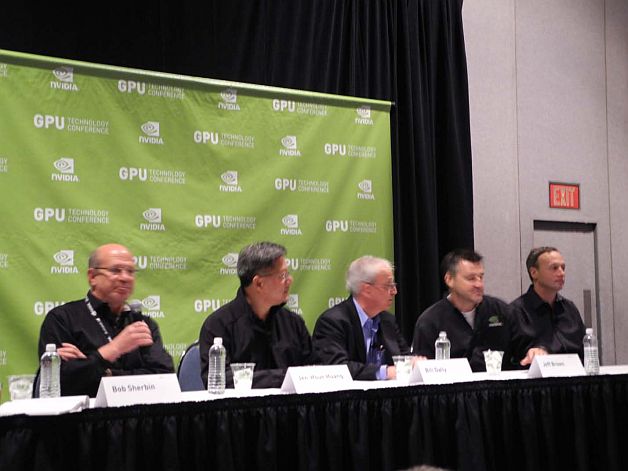
After the presentation, NVIDIA executives answered questions from the press. From left to right: Bob Sherbin (Vice President, Corporate Communications), Jen-Hsun Huang (President and CEO), Bill Dally (Chief Scientist), Jeff Brown (General Manager, Professional Solutions Group), Phil Eisler (General Manager, Cloud Gaming).
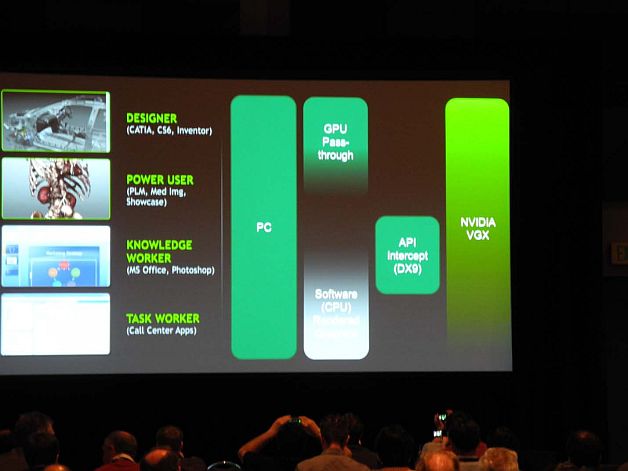
Then the presentation routine started. The abstract of one of the presentations dedicated to NVIDIA position on cloud calculations was quite intriguing: “Engineers, artists, scientists, and gamers are the most demanding visual thinkers on the planet, and as such have not been willing to move their computing environments to the infamous "cloud"…” In short, the intrigue was exposed: presumably, all concerns will disappear with NVIDIA VGX.

One can already try CUDA 5: a software platform for Kepler architecture.
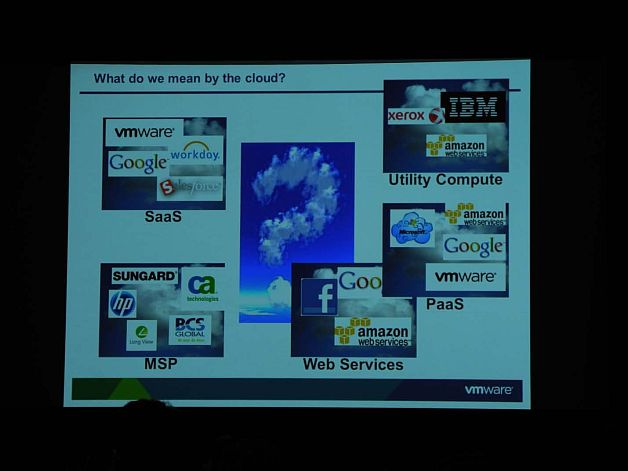
Guys from VMware asked a question “What is the cloud?” The answer is simple – companies put different meanings in this concept. But for all meanings there is already a simultaneous solution for virtualization and clouds from NVIDIA+VMware.
May 16, the third day
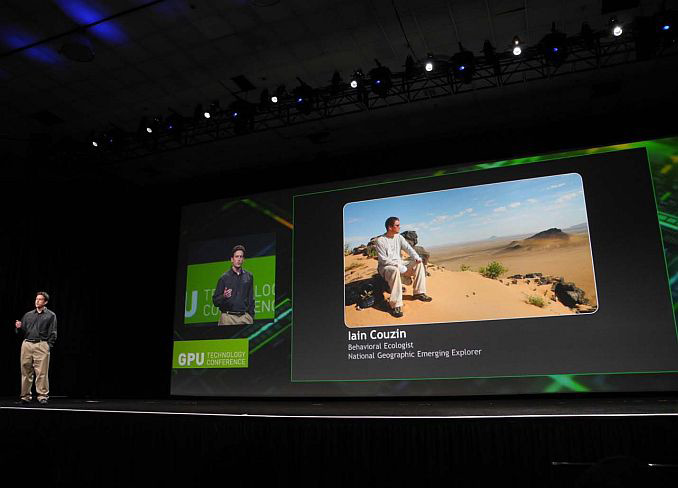
The key presentation of the third day: Iain Couzin discussed collective behavior in natural systems.
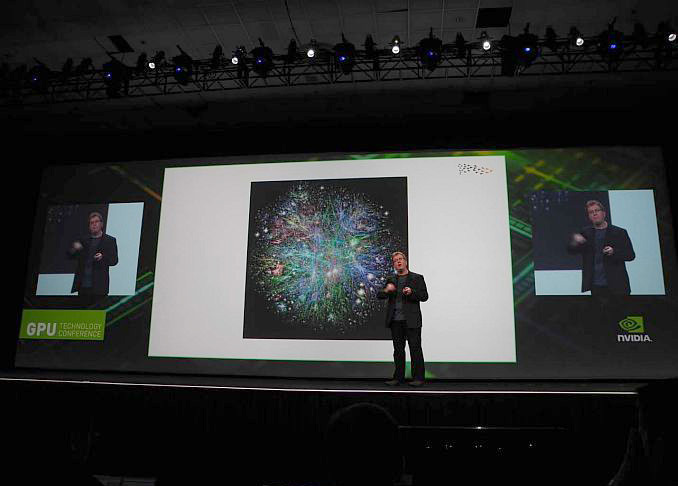
Learnable collectivity is also present in the Internet …
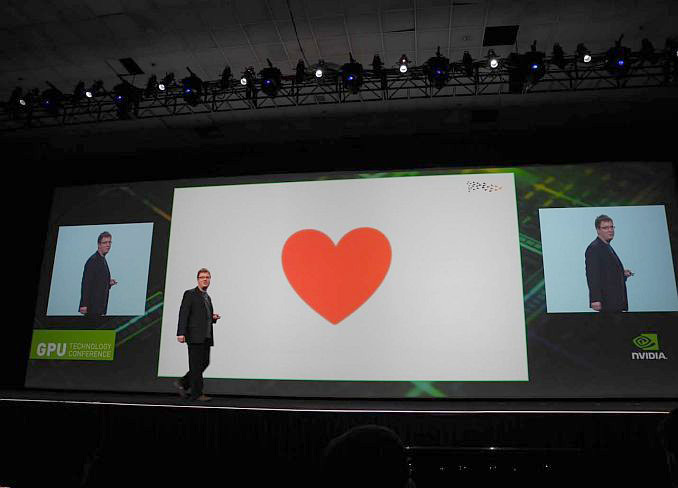
…in love…

… and jealousy.

No doubts: democracy – it is also collective behavior in animal groups with a conflict of interests.
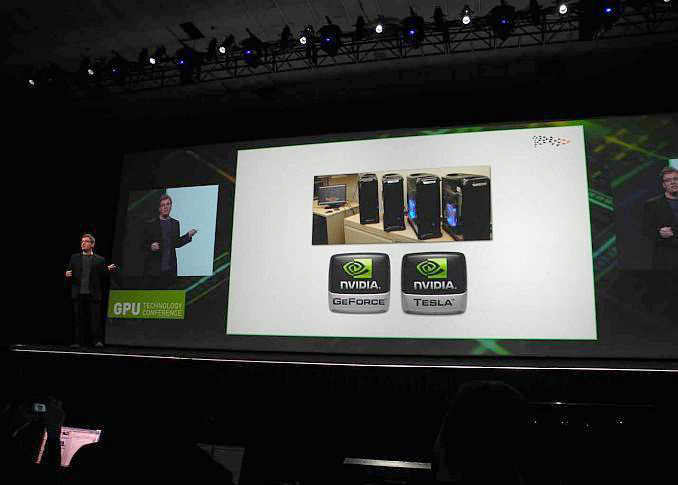
What is has to do with GPU? The thing is, they help assemble a supercomputer on desktops. One can set a problem, go drink a cup of coffee, and can already analyze the result. Those who had a chance to enjoy waiting for weeks in supercomputer “lines” or queues will certainly appreciate this approach.
May 17, the fourth day
The key presentation of the fourth day focused on one of the implementations of a project for a flight to the Moon organized as part of Google Lunar X Prize contest. The winner will be a private team of scholars and engineers, which will be the first to send a robot to the Moon. One of the competing teams - Part Time Scientists – is using NVIDIA GPU to calculate various robot parameters and movement trajectories. I am pleased to mention that one of their competitors is a Russian team – “Selenokhod”, its design is based on KOMPAS 3D.
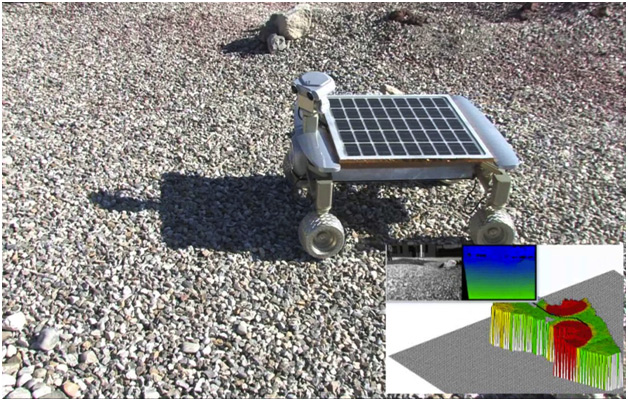
“Azimov” robot in realistic conditions.

Members of Part Time Scientists team in field testing.
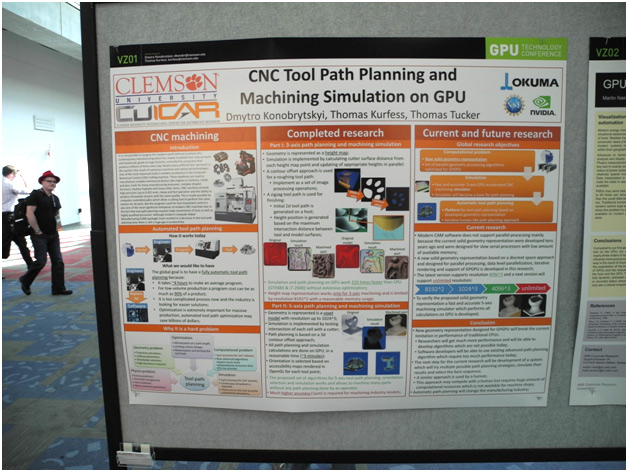
Apart from 250 presentations, the conference program comprised around a hundred posters. However, CAD/CAM/ÑAE/PLM was not widely represented (the picture shows one of a few such posters). A lot has yet to be done to popularize GPU.
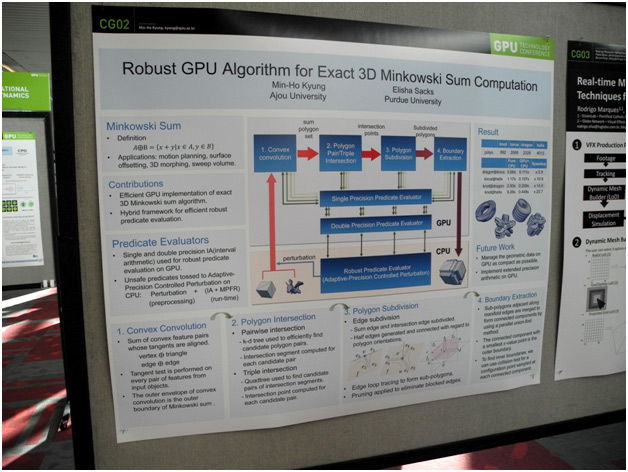
Each new algorithm for calculating Minkowsky sum is commonly referred to as “robust”. The algorithm for GPU was not an exception.
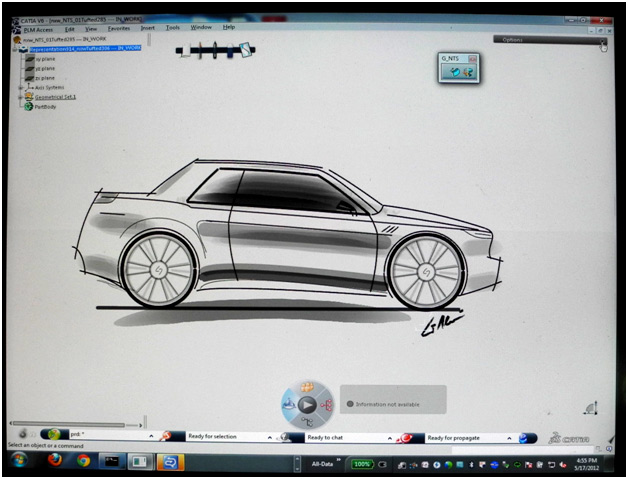
At the same time with presentations, there was an exhibition session, where companies of various calibers showed their solutions that were one way or another related to GPU. It was nice to see among them CATIA Natural Sketch from Dassault Systemes. Currently, however, it operates on CPU.
The fourth day, a journey into history
After learning about technologies of tomorrow, it’s about time to remember the yesterday’s ones. Fortunately, San Jose has Computer History Museum, so below you can find several non-random pictures.
Advertising captions (from left to right):
Silent 700, 1971. With her sleek new Silent 700 portable terminal in her briefcase, she’s ready for anything.
Osborne 1, 1981. It’s a full-powered personal computer – and when he carries it he’s got his whole office with him.
Smartphone, 2008. Always on e-mail keeps her in the loop 24/7, and the pocket-sized machine goes with her everywhere.
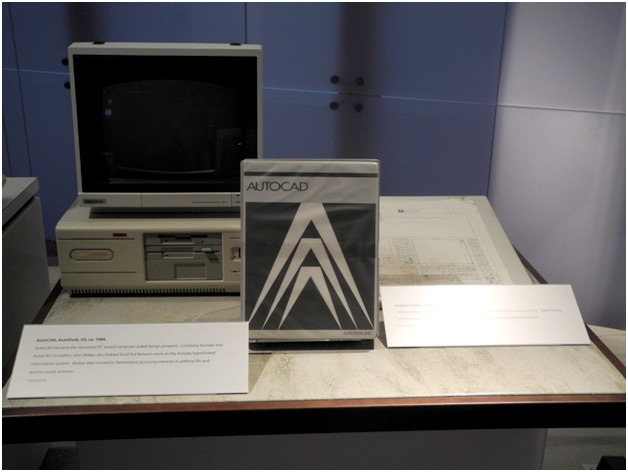
AutoCAD, 1986.
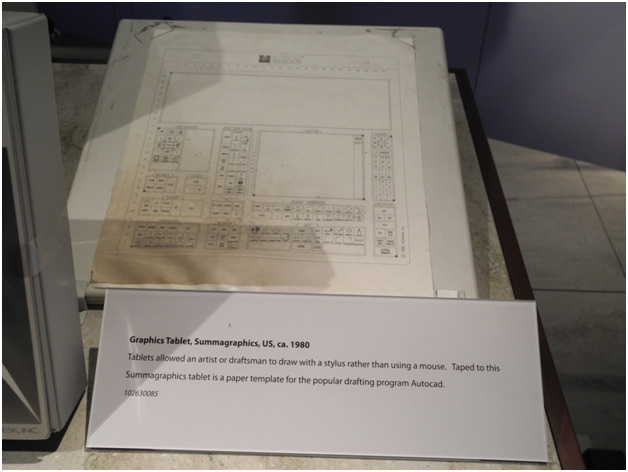
One of the first drawing Graphics Tablets.

This is a demonstration of the work of a famous SketchPad (compare with CATIA Natural Sketch!), created by Ivan Sutherland, one of the pioneers of computer graphics and geometric modeling.

Moore’s Law in force: every 24 months the number of transistors doubles. Irina Shekhovtsova, NVIDIA Senior PR Manager in Russia and CIS, demonstrates the position of NVIDIA on the trend curve in 2006.
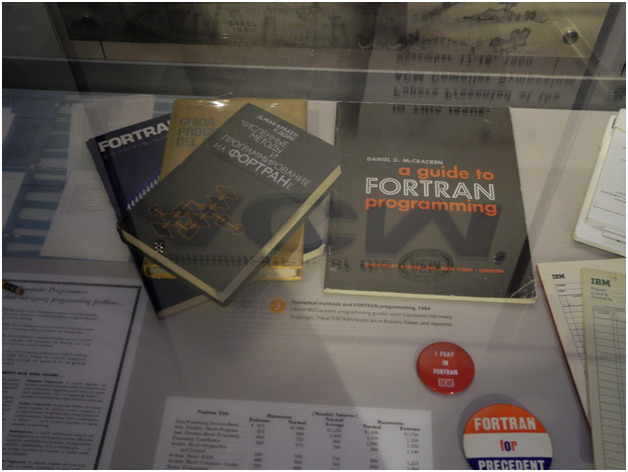
A tribute to programming in Russia: the pride of place is given to a book translated into Russian.
See also:
Permanent link :: http://isicad.net/articles.php?article_num=15318

|